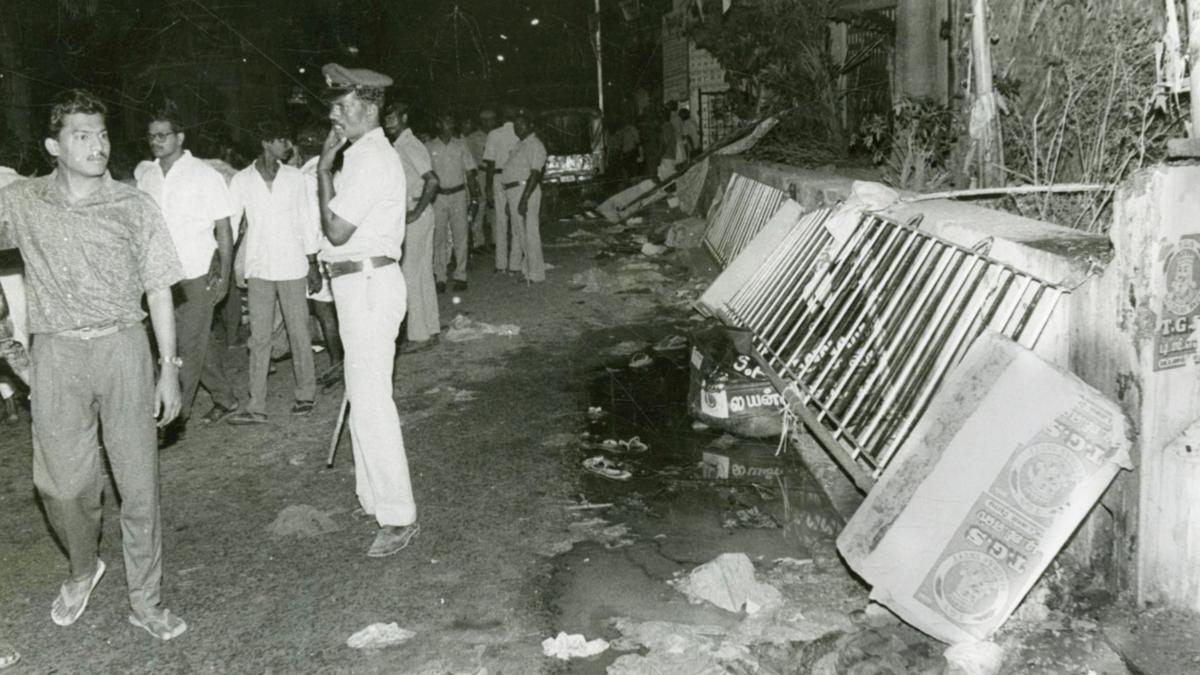
The 1992 Mahamakham tragedy at Kumbakonam and two accounts
The Hindu
Mahamakham tragedy of 1992 in Kumbakonam, where 48 died in a stampede, still haunts memories.
The Mahamakham tragedy of February 1992 in Kumbakonam, wherein 48 persons died in a stampede and over 60 sustained injuries, continues to linger in the memory of many. Two years ago, Congress Legislature Party leader K. Selvaperunthagai made certain observations in the Assembly on the 1992 Mahamakham, in which Chief Minister Jayalalithaa and her aide V.K. Sasikala participated.
Recently, former Tamil Nadu Director-General of Police W.I. Davaram, in his memoir, Munnar to Marina: The Journey, gave his account of the sequence of events. In 1992, he was the Inspector-General of Police (Law and Order), handling the arrangements for the festival. Besides, four DIGs and 16 Superintendents of Police were part of the team that supervised the arrangements, with the help of about 12,000 police personnel and support forces from Home Guards, Fire and Rescue Services, and voluntary organisations.
Popularly known as Kumbh Mela of the South, the Mahamakham of Kumbakonam is celebrated once in 12 years, “when the stellar combination of the sun, full moon, Maham star and earth and the planet Jupiter come on a single line. The force of gravitation exerted by the combination of stellar objects brings forth a copious flow of holy water from each of the 20 springs which is considered to have spiritual powers to wash off sins,” said a report in The Hindu on February 18, 1992. The festival began on February 9 with the hoisting of the sacred flags at the Kasi Viswanatha Temple on the banks of the Mahamakham tank and at the Kumbeswara Temple and Naganathaswami Temple in the town. On February 18, the D-Day, utsavamurthis [the idols meant for procession outside the sanctum sanctorum] of Saivite and Vaishnavite temples were to be taken to the Cauvery for performing “special poojas and abhishekams” before the holy dip by devotees in the sacred waters of the Mahamakham tank during the auspicious time between 11.30 a.m. and 12.15 p.m.
Giving a description of the tank, Mr. Davaram says the waterbody covers an area of over six acres with 16 mandapams spaced out along the sides. It is “fed by underground springs which have their source in the nearby Arasalar river, a tributary of the Cauvery,” says the author, who had his first Mahamakham experience in 1980 when he was the DIG (Tiruchi Range). Besides, he had the “benefit of the schemes” prepared for the Mahamakhams of 1956 and 1968.
He says that senior government officers, including himself, had requested Jayalalithaa to grace the occasion as it was the first mega festival after she took charge in June 1991, while she was initially against participating in the event.
What is more important is how the tragedy occurred. According to him, “it was caused by the hasty descent of those waiting on the [northern] bank [which was the main exit point] getting in the way of those leaving the tank. This had resulted in the drowning of many pilgrims, those trying to get into [the] tank and as well as those trying to get out.”
But The Hindu reported on February 19, 1992: “It all started with surging by tens of thousands of devotees who had come not only for a holy dip in the tank, at the muhurtham time two minutes before noon on the occasion of the Mahamakham, but also to see the Chief Minister, Ms. Jayalalitha. The stampede took place hardly 200 metres from a special bathing ghat where Ms. Jayalalitha was offering prayers.” (This was how her name was spelt then.)

The girl, who was admitted to Aster CMI Hospital with alarming breathlessness and significant pallor, was diagnosed with Wegener’s Granulomatosis (now known as Granulomatosis with Polyangiitis or GPA), a rare autoimmune condition that causes spontaneous bleeding in the lungs, leading to acute respiratory failure.

ACB files case against IPS officer N. Sanjay in Andhra Pradesh. The official is accused of manipulating the tender processes for awarding contract for development and maintenance of AGNI-NOC portal, and conducting awareness meetings for SC/STs. It is alleged that the total value of properties stolen, or involved in the case is estimated at ₹1,75,86,600.









